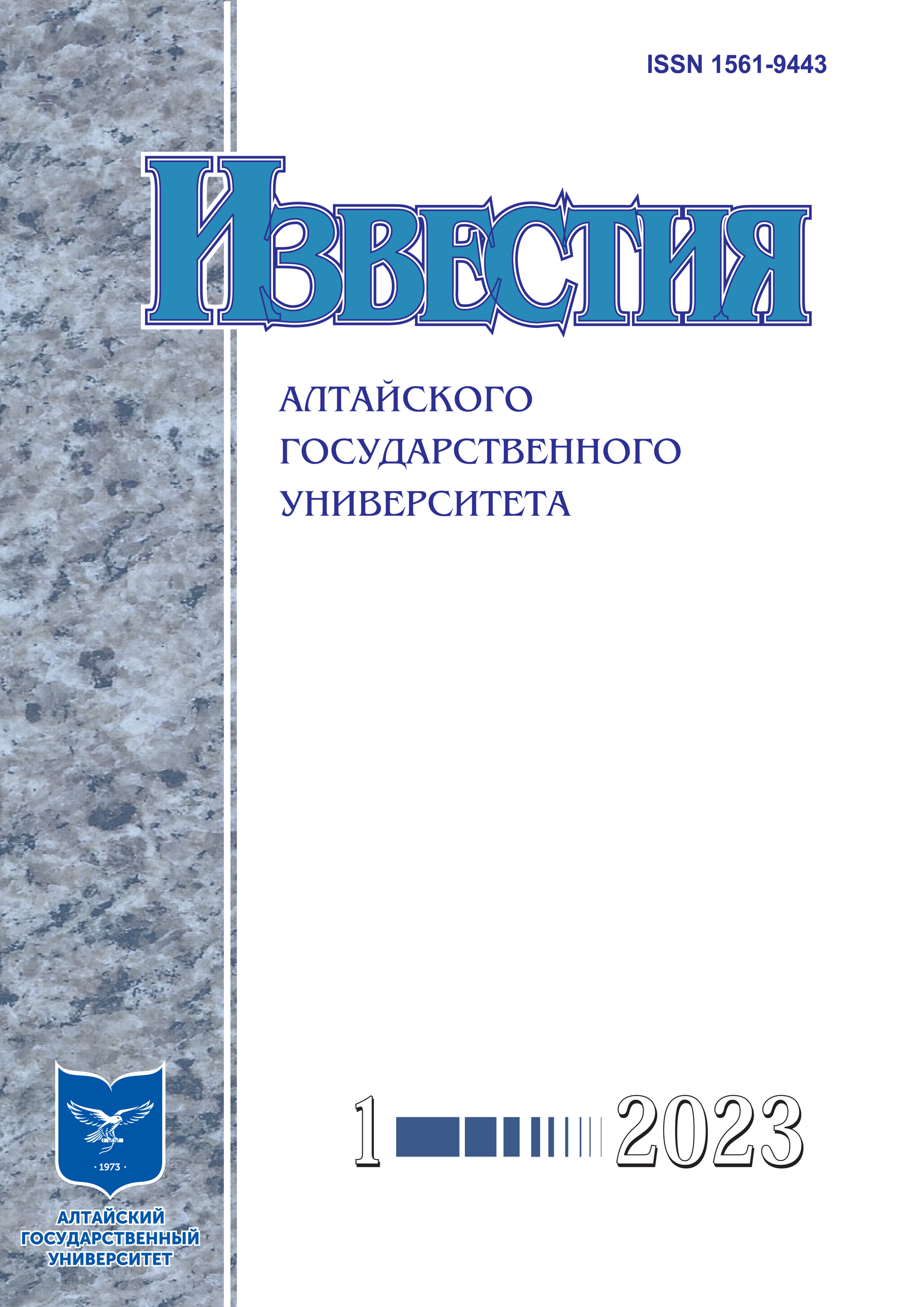Recognition of Synthesized Intermetallic Interlayers at the Interface in Ti@Al "Core — Shell" Nanoparticles Based on Computer Molecular-Dynamic Simulation
УДК 538.91:519.876
Abstract
The paper presents the results of applying a new method, previously developed by the authors, based on precalculated sets of 3D distributions of a matter density. The method is designed to recognize the spatial 3D distributions of the synthesized intermetallic compounds in the volume of a nanoparticle. A set of 3D distributions of a matter density in the volume of a cubic Ti@Al core — shell nanoparticle corresponds to a set of successive time points. It is calculated based on the results of the computer molecular dynamics simulation of self-propagating high temperature synthesis in the nanoparticle. Computational experiments are performed using the LAMMPS software package. Based on the obtained results, thermal and microstructural analyses are performed, confirming the multistage mechanism for the formation of intermetallic phases during the SHS reaction in the Ti-Al reaction medium. The sets of 3D distributions of the matter density and 3D distributions of synthesized intermetallic compounds in the volume of a nanoparticle corresponding to the sequence of time points are calculated. The paper shows the advantage of the method for recognizing 3D distributions of synthesized intermetallic compounds, proposed by the authors, over the methods of similar analysis built into the OVITO software package.
Downloads
Metrics
References
Plimpton S. Fast Parallel Algorithms for Short-Range Molecular Dynamics // J. Comp. Phys. 1995. № 117.
Stukowski A. Visualization and analysis of atomistic simulation data with OVITO — the Open Visualization Tool // Modelling and Simulation in Materials Science and Engineering. 2010. Vol. 18. № 015012.
Ackland G.J., Jones A.P. Applications of local crystal structure measures in experiment and simulation // Phys. Rev. B. 2006. Vol. 73 (5). № 054104.
Turlo V., Politano O. and Baras F. Microstructure evolution and self-propagating reactions in Ni-Al nanofoils: an atomic-scale description // J. Alloys and Compd. 2017. Vol. 708.
Baras F., Politano O. Epitaxial growth of the intermetallic compound NiAl on low-index Ni surfaces in Ni/Al reactive multilayer nanofoils // Acta Materialia. 2018. Vol. 148.
Rogachev A.S. and et al. Combustion in reactive multilayer Ni/Al nanofoils: experiments and molecular dynamic simulation // Combustion and Flame. 2016. № 166.
Jordan, V., Shmakov I. Thermal and microstructural analysis of intermetallide synthesis in the Ni-Al layered-block atomic structure based on the computer-aided simulation of SHS // Communications in Computer and Information Sciences. 2020. Vol. 1304.
Kart S.O., Kart H.H., Cagin T. Atomic-scale insights into structural and thermodynamic stability of spherical Al@Ni and Ni@Al core-shell nanoparticles // Journal of Nanoparticle Research. 2020. № 22 (140).
Ковалев О.Б., Беляев В.В. Математическое моделирование металлохимических реакций в двухкомпонентной реагирующей дисперсной смеси // Физика горения и взрыва. 2013. Т. 49. № 5.
Рогачев А.С., Мукасьян А.С. Горение для синтеза материалов: введение в структурную макрокинетику. М., 2012.
Jordan V.I., Shmakov I.A., Grigorevskaya A.A. 3D computer-aided simulation of SHS macrokinetics in the Ni-Al porous medium with the closest packing of “mesocells” // Journal of Physics: Conference Series. 2021. Vol. 1745. № 012062. DOI:10.1088/1742-6596/1745/1/012062.
Bharat N.T., Mishra D.P., Gundawar M.K. Effect of Heat Loss on Propagation Limits of Combustion Fronts // Combustion Science and Technology. 2020. Vol. 192 (3). DOI: 10.1080/00102202.2019.1565534.
Lam Fredric, Mi XiaoCheng, and Higgins Andrew J. Front roughening of flames in discrete media // Physical Review E. 2017. Vol. 96. Iss. 1. № 013107. DOI: 10.1103/ PhysRevE.96.013107.
Иордан В.И., Шмаков И.А. Вычислительная процедура распознавания синтезируемых интерметаллических прослоек на границе раздела в наночастицах типа Ni@Al «ядро — оболочка» // Высокопроизводительные вычислительные системы и технологии. 2021. Т. 5, № 2.
Jordan V., Shmakov I. Method for Intermetallide Spatial 3D-Distribution Recognition in the Cubic Ni@Al “Core-Shell" Nanoparticle based on Computer MD-Simulation of SHS // Communications in Computer and Information Science. 2022. Vol. 1526. DOI: 10.1007/978-3-030-94141-3_9.
Zope R.R., Mishin Y. Interatomic Potentials for Atomistic Simulations of the Ti-Al system // Phys. Rev. B. 2003. Vol. 68. № 024102.
Lopis A.S., Reynolds Q.G. and Bisaka K. Computational simulation of molten titanium-aluminium metal and alloys // Paper presented at the Conference of Metallurgistics. October 2010. https://www.pyro.co.za/Mintek/Files/2010Lopis.pdf.
Copyright (c) 2023 Владимир Иванович Иордан , Игорь Александрович Шмаков

This work is licensed under a Creative Commons Attribution 4.0 International License.
Izvestiya of Altai State University is a golden publisher, as we allow self-archiving, but most importantly we are fully transparent about your rights.
Authors may present and discuss their findings ahead of publication: at biological or scientific conferences, on preprint servers, in public databases, and in blogs, wikis, tweets, and other informal communication channels.
Izvestiya of Altai State University allows authors to deposit manuscripts (currently under review or those for intended submission to Izvestiya of Altai State University) in non-commercial, pre-print servers such as ArXiv.
Authors who publish with this journal agree to the following terms:
- Authors retain copyright and grant the journal right of first publication with the work simultaneously licensed under a Creative Commons Attribution License (CC BY 4.0) that allows others to share the work with an acknowledgement of the work's authorship and initial publication in this journal.
- Authors are able to enter into separate, additional contractual arrangements for the non-exclusive distribution of the journal's published version of the work (e.g., post it to an institutional repository or publish it in a book), with an acknowledgement of its initial publication in this journal.
- Authors are permitted and encouraged to post their work online (e.g., in institutional repositories or on their website) prior to and during the submission process, as it can lead to productive exchanges, as well as earlier and greater citation of published work (See The Effect of Open Access).








